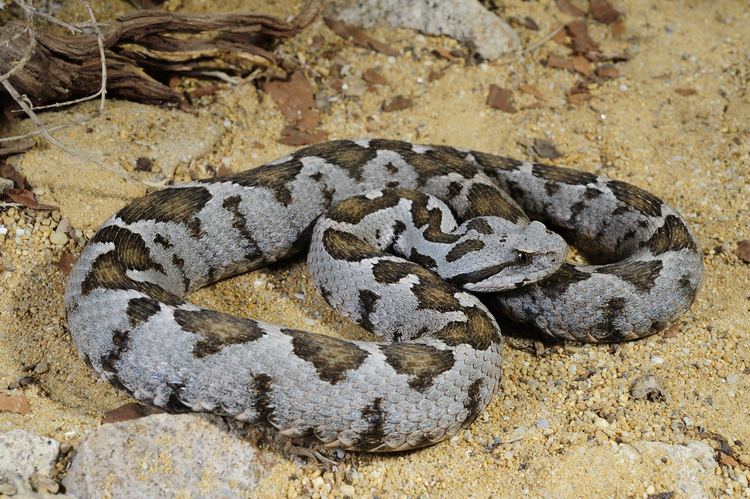Kingdom Animalia Subphylum Vertebrata Suborder Serpentes Scientific name Vipera xanthina Rank Species | Phylum Chordata Order Squamata Family Viperidae Higher classification Vipera | |
 | ||
Similar Montivipera, Snake, Vipera, Vipers, Reptile | ||
Vipera xanthina is a venomous viper species found in northeastern Greece and Turkey, as well as certain islands in the Aegean Sea. No subspecies are currently recognized.
Contents
- Vipera xanthina ottoman viper feeding
- Description
- Behavior
- Habitat
- Prey
- Common names
- Geographic range
- Conservation status
- Taxonomy
- References
Vipera xanthina ottoman viper feeding
Description
Dorsally, it is grey or white with a black zig-zag stripe. Melanistic individuals exist. It has keeled dorsal scales.
It usually grows to a total length (body + tail) of 70–95 cm (27.6-37.4 in), but reaches a maximum total length of 130 cm (51.2 in) on certain Greek islands in the Aegean Sea.
Behavior
Very aggressive, will strike without provoking, and most bites will inject venom
Habitat
Vipera xanthina can be found living in humid areas. It favors rocky and "well-vegetated" areas for its habitats.
Prey
The diet of Vipera xanthina is thought to consist of rodents and other small mammals and native birds. It has also been speculated that they prey on lizards as well.
Common names
Rock viper, coastal viper, Ottoman viper, Turkish viper, Near East viper, mountain viper.
Geographic range
Extreme northeastern Greece, the Greek islands of Simi, Skiathos, Kos, Kalimnos, Samothraki, Leros, Lipsos, Patmos, Samos, Chios and Lesbos, European Turkey, the western half of Anatolia (inland eastward to Kayseri), and islands (e.g. Chalki, Kastellórizon [Meis Adasi]) of the Turkish mainland shelf.
The type locality given is "Xanthus" [southwestern Turkey (Kınık)], and "Asia Minor." Listed as "Xanthos" by Schwarz (1936). Nilson and Andrén (1986) restricted the species to "Xanthos" [= Xanthus] (Kınık) province Mugla, S. W. Turkish Anatolia" through lectotype designation.
Conservation status
This species is classified as Least Concern (LC) according to the IUCN Red List of Threatened Species. It is listed as such due to its wide distribution, presumed large population, and because it is unlikely to be declining fast enough to qualify for listing in a more threatened category.
It is, however, listed as strictly protected (Appendix II) under the Berne Convention.
Taxonomy
According to Nilson, Andrén and Flärdh (1990), V. bornmuelleri, V. bulgardaghica, V.wagneri and V. xanthina are all closely related and together form the Vipera xanthina group or complex.
